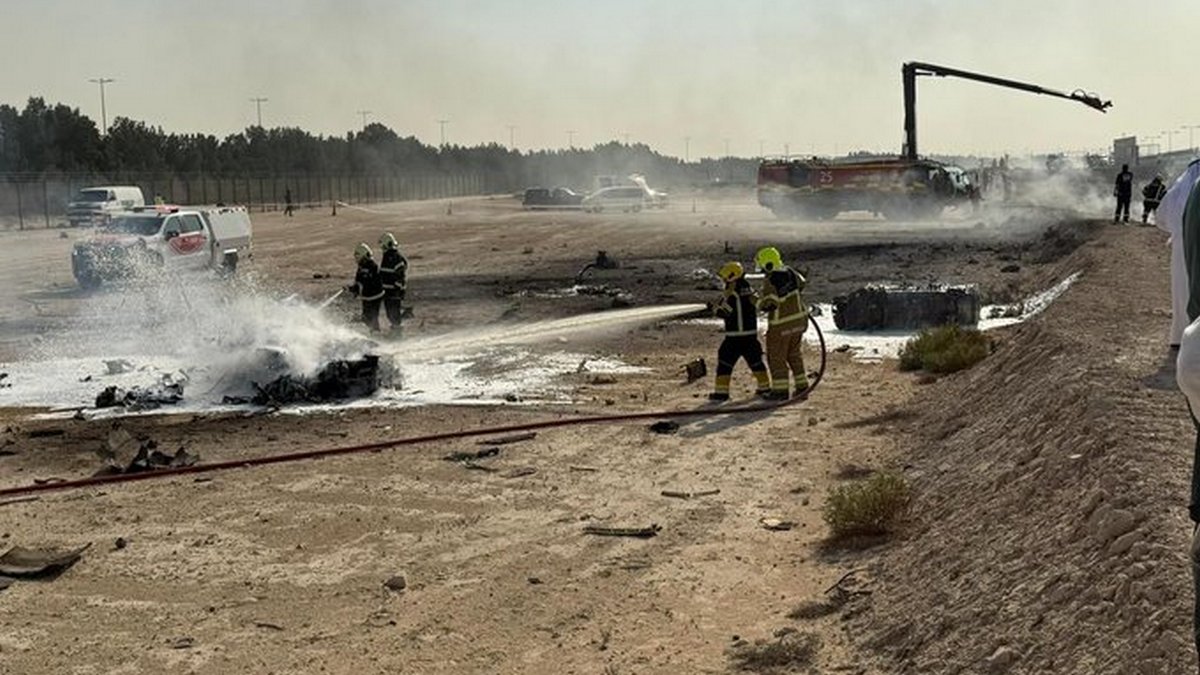An Indian Air Force (IAF) pilot has been killed in a Tejas fighter jet crash.
The indigenously made Light Combat Aircraft (LCA) Tejas, made by Hindustan Aeronautics Limited (HAL), went down at the Dubai Air Show today (November 21) afternoon.
The IAF has confirmed that the pilot passed away. It added that a probe was being constituted in order to determine the cause of the accident.
“An IAF Tejas aircraft met with an accident during an aerial display at Dubai Air Show today. The pilot sustained fatal injuries in the accident. IAF deeply regrets the loss of life and stands firmly with the bereaved family in this time of grief. A court of inquiry is being constituted to ascertain the cause of the accident,” the IAF said in a statement.
This is just the second Tejas crash in over two decades, including one that occurred last year.
But what happened? How did it unfold? What about the earlier crash?
Let’s take a closer look.
How Tejas fighter jet crashed
The single-seat light combat aircraft (LCA) crashed during a demonstration today on the last day of the Dubai Air Show, one of the largest aviation exhibitions in the world. The incident occurred around 2.15 pm local time as the pilot was performing manoeuvres in front of a large audience.
Visuals showed the fighter jet suddenly nose-diving and crashing into the ground as cries of dismay can be heard from the audience, which included women and children. The jet then burst into flames and a large plume of smoke was witnessed wafting above the Maktoum International Airport at Dubai World Central, where the show, which began on November 17, is being held.
Sources told NDTV that the pilot failed to recover from a negative G-force turn.
Also called “negative G”, it is the force that a pilot or passenger experiences in a direction opposite to that of gravity. This can happen when an aircraft accelerates downward or experiences a downward shift in velocity or severe turbulence. It leaves passengers and pilots feeling a sensation of weightlessness or “floating” within the aircraft.
One of the Tejas’s key traits is that it allows pilots to execute such negative G aerobatic manoeuvres such as loops, rolls, and inverted flight. Videos of the incident showed the fighter jet in free fall – which likely occurred due to the failed recovery.
Experts say that while negative G can feel exhilarating to pilots and passengers, it can also cause safety risks including discomfort, disorientation, and loss of consciousness as blood pools in the head. This is why pilots are given training to handle negative G during their missions, including techniques to maintain control and handle changes in altitude.
Authorities in Dubai said that firefighting and emergency teams responded quickly to the accident and are currently at the site.
The previous crash
The Tejas LCA has had just two crashes since its maiden flight in 2001 – which means it has the best service record of all fighter aircraft by far. The previous crash occurred on March 12, 2024, in Rajasthan’s Jaisalmer when the jet was on an operational training sortie just minutes after take-off.
The plane went down on the grounds of a student’s hostel near the Lakshmi Chand Sanwal Colony in the city. The pilot, thankfully, survived after ejecting from the jet – which was confirmed by both the IAF and an eyewitness. A video showed the jet gliding at a low altitude and moving right to left before it hit the ground with its landing gear open. The pilot was seen heading towards the ground on a parachute.
This occurred 100 kilometres away from the Bharat Shakti tri-services military exercise in the Pokhran desert, where Prime Minister Narendra Modi and Defence Minister Rajnath Singh were present.
The IAF at the time had also instituted a court of inquiry. However, a senior official at HAL had brushed off any concerns about the safety of the craft, noting its previously unblemished safety record. The aircraft was “absolutely safe”, the official added.
About the Tejas aircraft
The HAL Tejas is a single-engine, 4.5-generation multirole combat aircraft with a delta wing design. It is developed by the Aeronautical Development Agency (ADA) and manufactured by HAL. The idea for the Tejas LCA was formed in 1984. It was then Prime Minister Atal Bihari Vajpayee who gave the craft its name.
Powered by an engine made by General Electric, the Tejas LCA also comes with the Martin-Baker zero-zero ejection seat, a critical safety feature which lets pilots eject safely even during take-off, landing, or low-level manoeuvres. It uses an explosive charge to blow off the canopy, thrust the pilot clear of the aircraft, and deploy parachutes to stabilise descent.
Experts say the Tejas, like the F-16, is designed in a way that leaves it incredibly agile. Its advanced avionics and composite airframe leave it extremely light and manoeuvrable. However, like the F-16, it sacrifices some measure of stability to do so – which means it needs a powerful onboard computer.
The Centre in September ordered 97 new additional Tejas fighters from HAL, deliveries of which are slated to begin in 2027. The government earlier said it would purchase 83 Tejas Mk-1A aircraft under a 2021 agreement. However, those deliveries have been delayed.
The Tejas undertook its maiden flight in 2001 and was inducted into the Indian Air Force in 2015. The first operational squadron of Tejas, No. 45 “Flying Daggers”, was inducted into service in 2016.
The development comes as the Indian Air Force is preparing to press a new version of the Tejas, the LCA Mk-1A, into service. After the decommissioning of the Russian-origin MiG-21s, the Tejas LCA is set to become the backbone of the IAF.
India is also working on a fifth-generation fighter plane. However, experts say it will be years, if not likely decades, before such a craft takes to the Indian skies.
With inputs from agencies
)